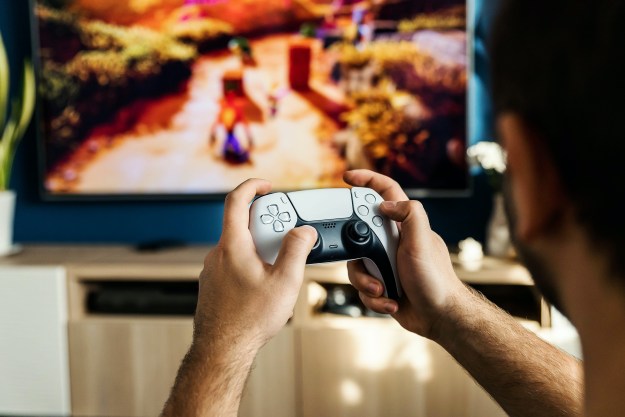Like the PlayStation 3, Sony released a midlife console revision for PS4 a few years back in the form of the PlayStation 4 Slim. Functionally, the two consoles are identical, unlike the more powerful PS4 Pro model. Both feature the same Jaguar CPU and processing power, and short of an optical audio output on the original PS4, they have the same connections, too. Game performance is the same across the two machines, but there are some minor differences in networking, availability, and noise that you should consider. While Sony hasn’t made any comments yet regarding other regions, it should be noted that they have discontinued the production of all non-PS4 Slims and PS4 Pros in Japan. This could imply they intend to make the Slim the only model officially supported going forward.
Since the PlayStation 5 has arrived, now is arguably the best time to invest in the last generation for anyone not ready to shell out for a new console. In this comparison, we’re going to detail everything you need to know about the two systems.
PS4:
PS4 Slim:
Further reading
PS4 vs. PS4 Slim overview
PlayStation 4 Slim |
PlayStation 4 |
|
| Dimensions | 10 inches x 11 inches x 1.5 inches | 12 inches x 2.09 inches x 10.83 inches |
| Weight | 4.6 pounds | 6.1 pounds |
| Processor | CPU: Eight-core X86 AMD Jaguar GPU:1.84 T-FLOPS, AMD Radeon Graphics Core Next Engine |
CPU: Eight-core X86 AMD Jaguar GPU:1.84 T-FLOPS, AMD Radeon Graphics Core Next Engine |
| Memory | 8GB GDDR5 RAM | 8GB GDDR5 RAM |
| Hard drive | Built-in, 1TB HDD (earlier models were 500GB) | Built-in, 500GB HDD/1TB HDD (can be swapped for larger drive) |
| AV output | HDMI out | HDMI out, Digital output (optical) |
| I/O output | 2x Super Speed USB 3.0 | 2x Super Speed USB 3.0, AUX |
| Communication | Ethernet, Bluetooth 2.1, dual-band Wi-Fi | Ethernet, Bluetooth 2.1, Wi-Fi |
| Controller | DualShock 4 (redesign) | DualShock 4 |
| PlayStation VR compatible | Yes (sold separately) | Yes (sold separately) |
| 4K output | No | No |
| HDR | Yes | Yes (with patch) |
| UHD Blu-ray | No | No |
| PlayStation camera compatible | Yes (sold separately) | Yes (sold separately) |
| Price | $300 | Varies |
| Availability | Available now | Through resellers |
| DT review | 4.5 out of 5 stars | 4 out of 5 stars |
Design
This is the largest, and pretty much only, difference between these two PS4 models. The new slim model packs all of the hardware from the original model into a smaller form, resulting in a decrease in size of about 30 percent. Of course, to squeeze into a smaller shell, there often have to be sacrifices, but the only loss here is the optical audio port — all other ports and components, including the two USB 3.0 ports, Ethernet port, and HDMI and AUX ports, remain.
One of the more puzzling aspects of the PS4’s original design was its Power and Eject buttons. The original PS4 had two small touch sensors located in the center-front of the console’s face that were not only difficult to find but also placed close to one another, making it easy to confuse the two. A very minor hardware update fixed these, adding better tactile buttons. The fix has been carried over to the Slim.
Finally, the DualShock 4 controller also received a minor redesign. The light bar, which changes color and brightness dynamically depending on in-game actions and context, now shines in a narrow bar on the front of the controller, in addition to its original location on the front. This should make it easier to see and appreciate these subtle color changes, which were previously obscured due to the light bar’s placement. The new DualShock 4 ships standard with the PS4 Slim models.
Both models are still sleek, slightly angular devices, with a matte black finish and understated PlayStation logos emblazoned on the case. The PS4 Slim’s edges are more beveled compared to the sharp edges of the original PS4, but there really isn’t any major difference between the two in terms of aesthetics. These two consoles look like they belong to the same family of devices — something true for even their PS4 Pro sibling.
Since this is really the only aspect in which the new PS4 slim model differs from the original, we’re going to give the win in this category to the Slim. But if the design doesn’t matter much to you, then you can largely disregard these differences.
Winner: PS4 Slim
Power
When Sony says the PS4 Slim is the same as the original PS4, just in a smaller package, it isn’t kidding. The same GPU, CPU, and RAM that power the original PS4 are in the PS4 Slim, and both consoles will run games at the same proficiency — you won’t see any visual or technical enhancements to your games by playing them on one over the other.
This extends to new and upcoming features and peripherals as well, such as HDR visuals and PlayStation VR, which the PS4 and PS4 Slim are fully compatible with.
Both of these systems lack the special features of their more powerful sibling, the PS4 Pro — most notably, 4K content. And, of course, fall far behind the PS5.
Winner: Tie
Price and availability
The PlayStation 4 Slim is now the standard PS4. It’s marked at $450 with 1TB of storage, but you can often find it for as low as $250 and bundled with games. This is especially true during the holidays and periods such as Prime Day.
At this point, you cannot find a brand-new launch version of the PS4. You can, however, find a preowned one for less than the PS4 Slim through resellers.
Winner: PS4 Slim
Noise
The PS4 is notoriously loud, with the fans ramping up for games that barely tax the hardware inside. The PS4 Slim is no different, especially in recent titles like Ghost of Tsushima and The Last of Us: Part II. With less-demanding games, though, the Slim isn’t nearly as loud as the original PS4. Although the two consoles are functionally identical, the Slim draws less power when running games and, therefore, generates less heat.
This is especially true for games like Rocket League and Minecraft, which barely scratch the surface of the PS4’s computing power. If noise is a concern for you, the PS4 Slim is the better option.
Winner: PS4 Slim
Storage space
When it comes to storage space, the PS4 and PS4 Slim are identical. The original PS4 had a 500GB model, which the Slim matched when it launched, but both systems moved to a 1TB drive shortly after. One of the key features of the original PS4 was its removable hard drive. With no more than a couple of tools and about 20 minutes, you could easily upgrade your PS4’s hard drive. That functionality is still present on the Slim, and it’s even easier to do.
Winner: PS4 Slim
Networking
One key feature of the PS4 Slim is support for 5GHz Wi-Fi. The original models can only communicate on 2.4GHz. Unfortunately, this is a hardware issue, so it doesn’t matter what PS4 firmware you have: The original PS4 only has a single-band Wi-Fi adapter. Both models offer gigabit Ethernet, and that’s ideal if you want to play games online. If you’re going wireless, the Slim is the way to go. 5GHz doesn’t reach as far as 2.4GHz, but it has a higher top speed. Furthermore, 5GHz usually has less traffic, leading to better network stability.
Winner: PS4 Slim
Conclusion
Our analysis concludes that you’ll get the same quality of gameplay no matter which of the two consoles you use. We can say the same for how the consoles handle PlayStation VR, compared to the more powerful PlayStation 4 Pro. Some of the smaller differences include fewer fan noises and more streamlined networking capabilities on the Slim, but overall, we think they’re on par with each other.
While one may be a little more expensive than the other, the prices equal out in the end due to the various bargain upgrades and game packages offered for each one. Unless you care about having a smaller console — or require optical audio — the whole comparison is a wash.
If you already have the launch model PS4, there’s no reason for you to upgrade to the PS4 Slim. If you’re buying a completely new console, then the Slim is an excellent choice. The PlayStation 5 offers the best improvement gap from your standard PS4, making it a great choice to upgrade the console you already have.
Winner: Tie
PS4:
PS4 Slim:
Editors' Recommendations
- The best cozy games
- PlayStation Portal 2: 8 features we want in Sony’s next-gen handheld
- The PS5 Pro may be coming even sooner than we thought
- PlayStation Spring Sale: best deals, how long is the sale, and more
- Best gaming console deals: cheapest prices on PS5, Xbox S and X and Switch




